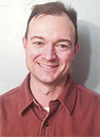As a rule, most women are capable of multitasking and can keep their mind focused on multiple things of great importance at once.
If you ask a woman what she is thinking about and she says “nothing,” she is usually, in fact, thinking about something, because so much of the feminine thought process is all interconnected.
We knuckle-dragging males are generally much more simple-minded.
Contrary to popular opinion, we don’t only think about one subject, but as a rule we are not capable of thinking about more than one subject at a time. We put our thoughts into “boxes,” if you will.
We are very careful to only open one box at a time. To our advantage, we also have a “nothing box,” which is our largest and favorite box.
So, ladies, when you ask us what we are thinking about and we say “nothing,” it is, in fact, true. Nothing is going on up there, and it can be completely satisfying to be in our “nothing box.”
Being in the nothing box does not mean that we are doing nothing – we just aren’t thinking.
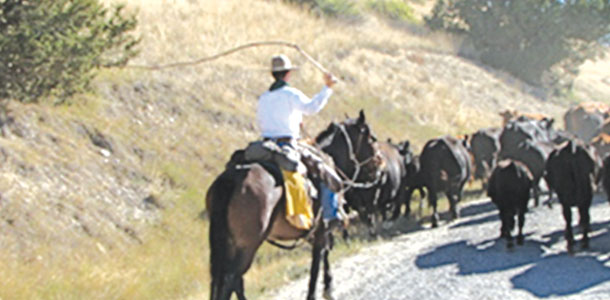
From man to cattle
The cow’s brain is much like the brain of the human male. What can I say – simple creatures think alike.
The cow is generally only capable of processing one major thought at a time as well. If you watch cattle laying around chewing their cud in the middle of the day, I would have to say the concept of a “nothing box” could easily apply to a cow as well.
This inability to process more than one thought at a time can be to our advantage or disadvantage when handling and processing cattle.
Think about how many times we have been trailing cattle, and our trusty canine got just a little too close to sneak a nip at a calf’s heel when we weren’t looking.
The calf, who was previously in his “nothing box” – instinctively following mama – changes its focus to the dog, turns around to look at its attacker for a moment and then has lost track of where mama is in the herd.
From that point on, until he finds mama again, that calf is a pain in the tail because he is now thinking his personal milk machine is back at the last place he got fed, and he keeps trying to break from the herd the rest of the day.
While this may be beneficial if you enjoy punching a hole in your rope, it is generally counterproductive to the day’s goal of a smooth and stress-free trail.
This is not to say that dogs are a bad thing, because they are certainly a beneficial tool when well-trained.
Sometimes just the mere presence of a dog does a lot to make the cow keep closer tabs on her calf and get her focused on trailing out to get away from the presence of the dogs and the cowboys.
So, when we’re trailing cattle, once we get the herd moving in the right direction, let’s stay back and try to keep those cows in their “nothing box.” Only jump in if we need to refocus them or change direction.
The thought process of a cow also affects how well a corral system will work for us. While it is possible to force cattle through hectic situations in the pens, it is neither fun nor time-efficient.
Something as slight as a shadow can make a cow change her train of thought, so let’s look at some simple things we can do in the pen to make things flow better.
Lighten the path
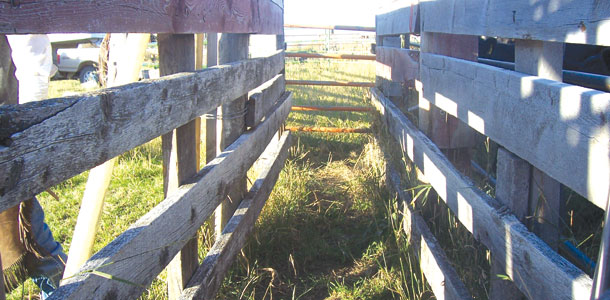
Try to avoid lots of shadows, especially in crowd areas. Cattle don’t see well to begin with, and we don’t want to have shadows that will make them lose focus on following the cow in front of them.
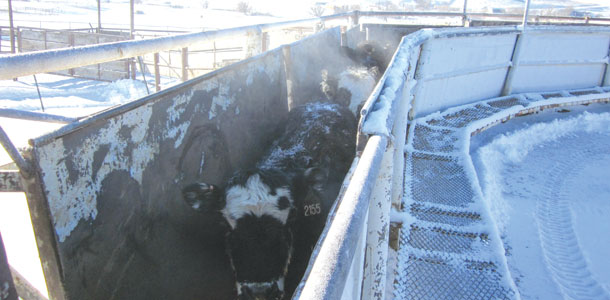
Wherever you have alleys and chutes that don’t have solid sides, shell out the money for some plywood or sheet metal and make those walls solid all the way up. You’ll be glad you did when it’s all said and done.
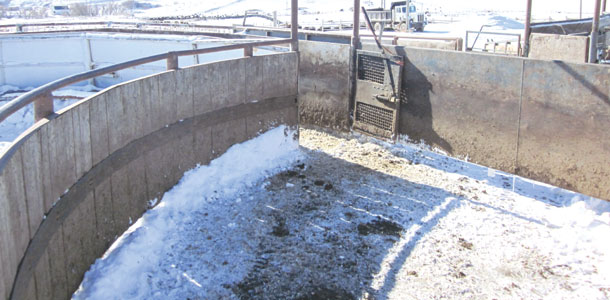
Avoid the crowd
Don’t overcrowd cattle in the crowd facility. This applies to a crowd tub, bud box, pen or whatever you use for a crowd.
Cattle need to be able to move freely and follow the leader. When cattle can “flow” through to the chute instead of being forced, they stay focused on the cattle in front of them and keep moving along.
When they get overcrowded and stop moving, the thought process changes to defense; they bury their head to hide from you, the hot shots come out, and things get Western.
Taking drafts of cattle that will only fill about half of your crowd facility should alleviate much of this problem.
Remember that the crowd facility is not there for cattle “storage;” it is intended for the cattle to flow through into the chute, so keep that crowd area empty as much as possible.
It may mean a few extra trips up and down the alley for you or your mount. I doubt he’ll complain too much, and the exercise won’t hurt you either.
No stare-downs
When you want cattle to go by you, don’t look them in the eye as they come down the alley. They are a prey animal, and looking them in the eye kicks in the fear mechanism, which in turn slows down the flow of cattle through the pens.
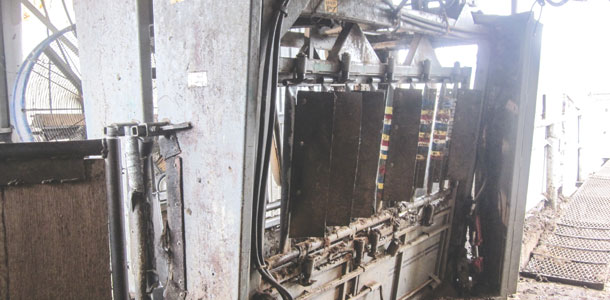
Less fear at the chute
All the fussing we do over the rest of the pens will be a waste if we are still having pile-ups at the squeeze.
When these cows go through our carefully constructed pens only to come to the squeeze and see four pairs of eyes staring at them like a pack of hungry wolves, they are naturally going to balk. To avoid this, put some louvers on the side pipes.
This can easily be done in a couple of hours with the help from some old belts out of the round baler.
This way, the cattle don’t see you there ready to pounce on that head catch. Also, use the belting material to silence that annoying clang when the head catch pops open as you let a cow out.
If you watch the cow who is “on deck,” every time you open the squeeze to let the current victim loose and the head catch clangs loudly, the cow on deck tends to retreat.
Padding the noise will not only help reduce the tendency to retreat but also will help keep the cow being let loose from going backward instead of going forward out of the squeeze.
An easier exit
One last thing that slows up the works at the chute is when cattle being released from the squeeze go backward, hit the tailgate and then exit the chute.
This puts the “on deck” cow in retreat mode and adds to the delay of the process as a whole.
It has been observed by many that when releasing a cow from the squeeze, if you open the head catch first, then let off the squeeze, the cow being released will tend to move forward more often than if the squeeze is released and then the head catch.
We need to remember that quiet and smooth will always be faster than the cram-and-jam methods.
The more we can do to keep cattle thinking on the thoughts we want them to or keep them in their “nothing box,” the easier they will handle. ![]()
Billy Whitehurst is a beef cattle extension educator with the University of Idaho.
PHOTOS
PHOTO 1: When allowed to flow freely and undistracted, cattle will string out and travel much faster than when pushed constantly. This type of movement allows cattle to move instinctively rather than generating thought processes of “fight or flight.”
PHOTO 2: The whips were cracking and the calves were still trying to cut back on this day. Once the dogs were let out, cows came back to pick up their calves and things went well the rest of the day. The dogs never nipped a cow or a calf.
PHOTO 3: The chute is full of shadows that cause cattle to lose focus.
PHOTO 4: The chute is solid-sided, and cattle can’t see anything going on around them, leaving them happily in their “nothing box.”
PHOTO 5: This crowd tub has a 16-foot crowd gate and the ideal draft size for a tub even this large is only about six or seven head of yearlings or mature cattle.
PHOTO 6:The rubber louvers bolted to the side pipes at a 45-degree angle allow the chute operator to be shielded from the cow’s vision and still allows room in between the side pipes to give shots without having to drop a side pipe. Photos courtesy of Billy Whitehurst/University of Idaho.
